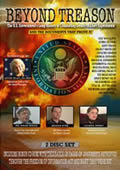Other
Stuter
Articles:
Justice For All
Or Justice Fon
None
System
Governance Bankrupting
States
Are Public
Schools
Constitutional
Homeschools, Private Schools,
and Systems Education
By Lynn Stuter
January 10, 2006
NewsWithViews.com
For several days in a row, when doing errands in your car, you consistently come in contact with drivers who tailgate you, cut you off in traffic, or maybe pull out in front of you unexpectedly. Or you go out to get your mail and see someone sitting on a bicycle watching you from a distance. Or maybe you notice a sudden increase in strange cars driving slowly pasd your home. Or you get the feeling you are being followed but don�t see anyone there. Or you find garbage strewn on your lawn or piles of dirt where dirt shouldn�t be. Or you return to your home and notice that pictures or knick knacks aren�t where they were when you left.
Is this all just coincidental or is there something more to it? You might even wonder if you just have an over-active imagination or if maybe you�ve slipped a few cogs upstairs.
Over the past ten years, a phenomenon has become apparent that more recently has been given a name:�gang-stalking, also known as group-stalking, vigilante-stalking and predatory gang-stalking.
Over a period of time gang-stalking has produced some commonalities among those targeted or victimized:
1. The target is likely seen as a threat to a cause;
2. The target most likely does not know the perpetrators [1] of the gang-stalking;
3. Those involved in the gang-stalking do not know the target;
4. Those involved in the gang-stalking do not necessarily know why they are gang-stalking an individual;
5. The stalking is subtle but targeted and can be seen as inconsequential or everyday such as �
a. drive-by honking of horns,
b. drive-by yelling of obscenities,
c. hand gestures generally considered to be hostile in nature;
d. vehicles stopping and standing on the street in front of the target�s home;
e. trash strewn on the target�s lawn, driveway and property in such manner as to make it obvious that it was a deliberate act;
f. shining lights in the windows of the target�s home;
g. an increase in noise in the area of the target�s home;
h. tailgating the target then dropping back repeatedly;
i. sending the target messages that let the target know they are being watched such as�i. the names of family pets;
ii. the names of children;
iii. stores visited frequently;
iv. schools the children attend;j. day-in and day-out hang-up calls or wrong number calls;
k. vandalism to the home or property of the target;
l. graffiti in proximity to the target�s home;
6. The gang-stalking takes place over a period of time or number of years;
7. The faces of those involved in gang-stalking change frequently but the perpetrators often remain constant.
The intent of gang-stalking is to �
1. render the target, the victim, psychologically demoralized even to the point of committing suicide;
2. make the target appear, to the larger community, to be mentally unstable for the purposes of � a. discrediting and psychologically demoralizing the target; b. ensuring no one will believe the target when they claim they are being targeted;
3. alienate and marginalize the target from the larger community, even family, making it easier to psychologically demoralize and discredit the target.
The number of reported incidences of gang-stalking has increased measurably since the early 1990s when the transformation of American society to systems philosophy began in earnest.
Gang-stalking holds no political association with those targeted covering the political spectrum of liberal, centrist, conservative, ultra-left and ultra-right. People involved in gang-stalking display a common trait of needing to feel that they have power over the target even though they may not know that person.
Group dynamics, how individuals interact in a group, a general need of an individual for human contact and interaction, plays a key role in the structure of gang-stalking.
One high-ranking law enforcement official, on the condition of anonymity, has stated that �
1. law enforcement is under strict orders that they are to ignore all cases of gang-stalking, and if possible to provide evidence that the victim is criminally insane; and
2. the criminal justice system is strictly under the control of a small elite who ensure that no charges are pressed against the instigators of gang-stalking.
Gang-stalking relies heavily on �
1. the target becoming so psychologically demoralized that he/she believes there must be something wrong with him/her and is, therefore, afraid to say anything for fear others will think them crazy;
2. the target will have no evidence beyond his/her word that the gang-stalking is happening;
3. the target will have no detailed records or documentation showing what, when, where, and to what extent;
4. the target will not be able to find out who the perpetrators are or those involved in the gang-stalking.
Anyone who believes they are being gang-stalked should �
1. Keep detailed records and documentation of times, dates, and details; making those records as soon as the incident is apparent so details are not lost over time.
2. Take pictures of any evidence left by the perpetrators making sure to include a point of reference in the picture for identification purposes. For instance, if trash is strewn on the lawn, take close ups but then take pictures showing the house, garage, or even a car in the picture as a point of reference that the garbage was actually where you claim it was.
3. Keep detailed records of any interaction with law enforcement; even when law enforcement are friendly and appear to be empathetic. Keep track of who the responding officer is, what department he works for, what he tells you, what he does. If he removes evidence from the scene, note how he handles it, what he does with it. Know the procedures for preserving evidence and observe if the officer follows those procedures. Write it all down so details aren�t lost over time. Ask for an event number and incident number.
4. If you believe you are being gang-stalked, get a psychological evaluation immediately. This establishes that you are mentally stable when those involved and law enforcement try to intone that you are somehow mentally deranged.
5. If you believe you are being gang-stalked, don�t be afraid to speak up. There was a time when people being stalked were not listened to, were considered to be off in the head. Now stalking someone is a crime. The more who speak up, the better chance there is that gang-stalking will not continue to operate under the radar.
|
Subscribe to the NewsWithViews Daily News Alerts! |
To learn more about gang-stalking, enter the term in your internet search engine. There are several good websites, and more coming every day, with information on gang-stalking. Support groups are also being formed to help people who have been the victims of this heinous dehumanizing act.
Footnotes:
1, Perpetrators of gang-stalking do not always participate in the activities targeted at the victim, but stay in the background unseen.
� 2006 Lynn M. Stuter - All Rights Reserved
Sign
Up For Free E-Mail Alerts
Mother and wife, Stuter has spent the past ten years researching systems theory with a particular emphasis on education. She home schooled two daughters, now grown and on their own. She has worked with legislators, both state and federal, on issues pertaining to systems governance and education reform. She networks nationwide with other researchers and citizens concerned with the transformation of our nation. She has traveled the United States and lived overseas.
Web site: www.learn-usa.com
E-Mail: lmstuter@learn-usa.com�
Keep detailed records of any interaction with law enforcement; even when law enforcement are friendly and appear to be empathetic. Keep track of who the responding officer is, what department he works for, what he tells you, what he does.












